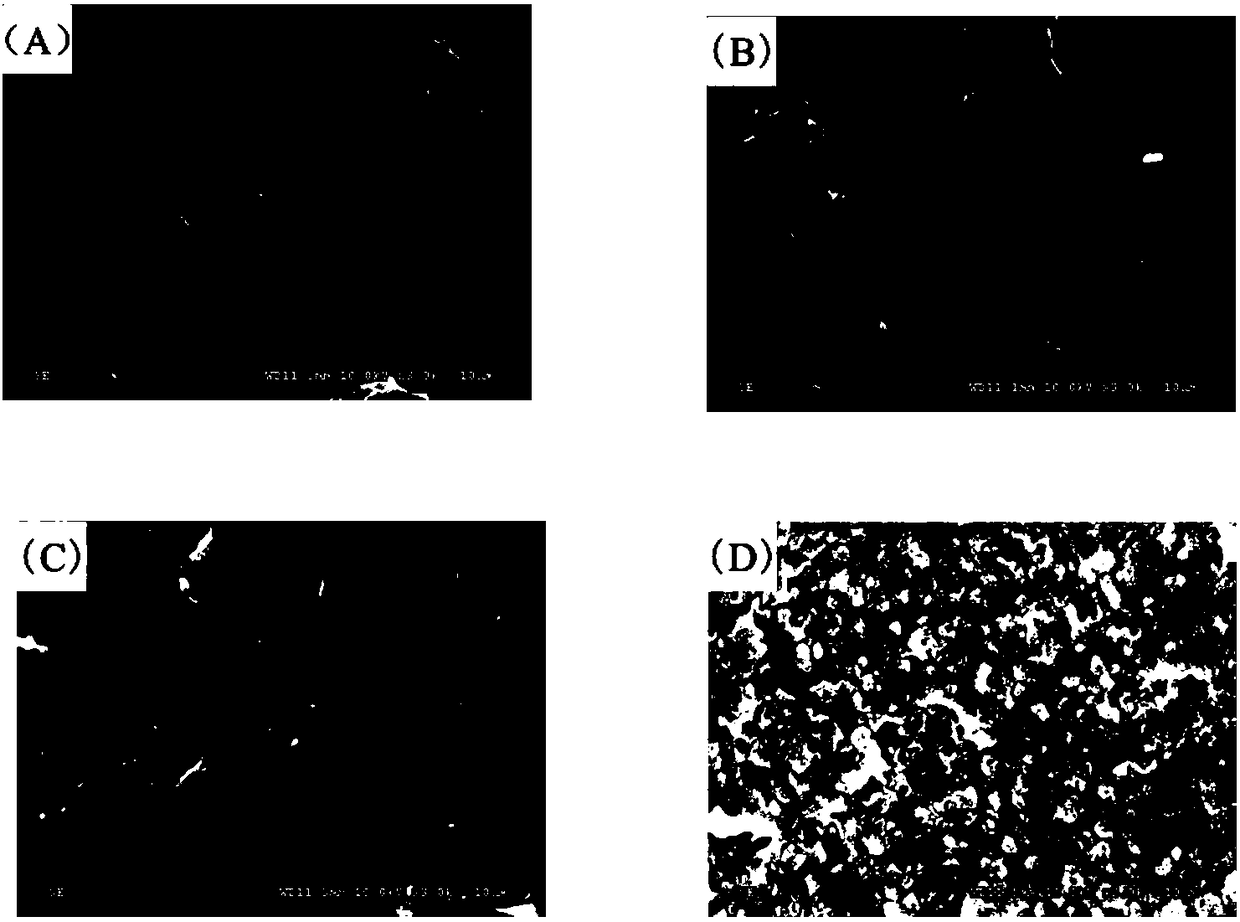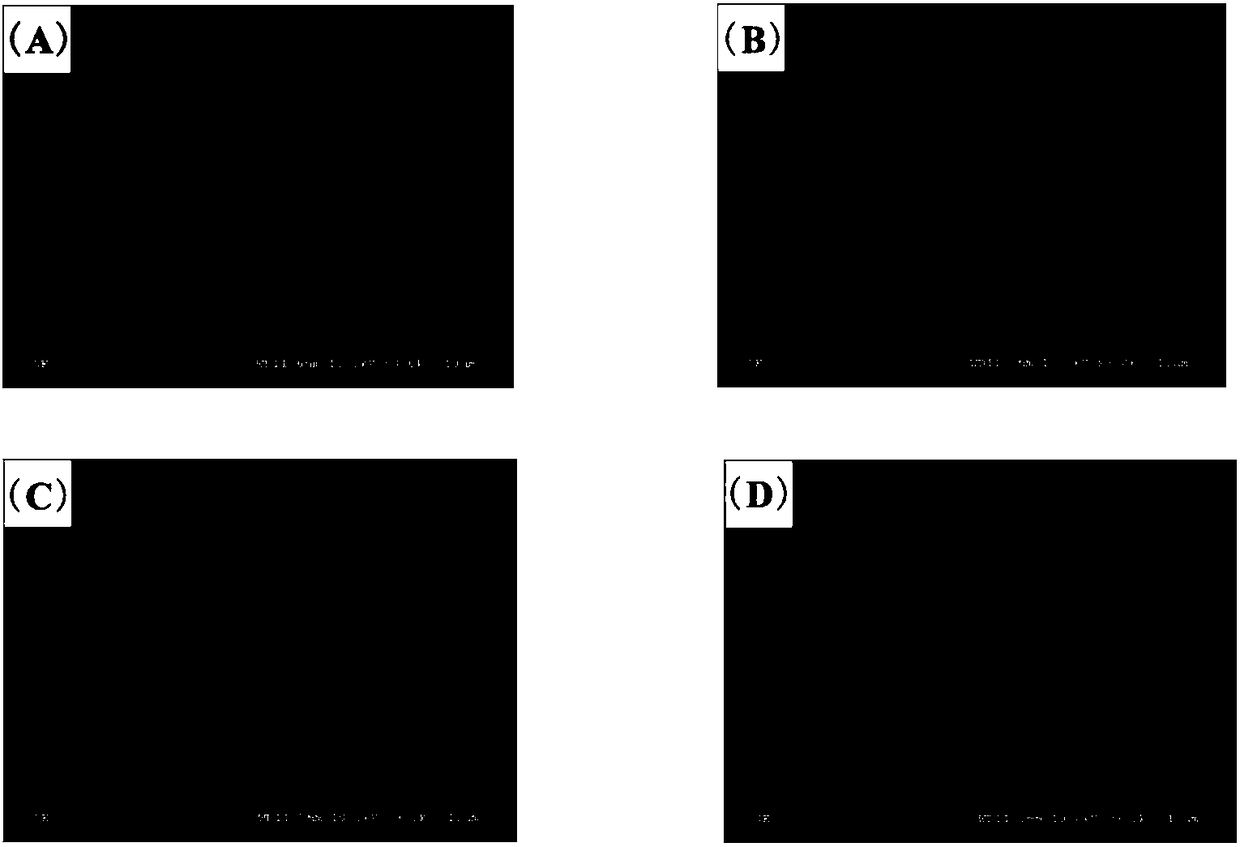Preparation method of polylactic acid/polycaprolactone/polyformaldehyde blend
A technology of polycaprolactone and polylactic acid, which is applied in the field of preparation of polylactic acid/polycaprolactone/polyoxymethylene blends, can solve the problems that the toughening effect of PLA cannot be fully exerted, and achieve good biocompatibility and Biodegradability, simple industrial preparation, effect of improving tensile toughness
- Summary
- Abstract
- Description
- Claims
- Application Information
AI Technical Summary
Problems solved by technology
Method used
Image
Examples
Embodiment 1
[0029] Dry PLA, PCL, and POM resins in a vacuum drying oven at 50°C for 12 hours; take 80 parts of PLA, 20 parts of PCL, and 1 part of the third component POM, mix and stir them and add them to the internal mixer. The temperature of the internal mixer is 180°C and the speed is 50rpm, blending time 8min, to obtain a mass fraction ratio of PLA / PCL / POM (80:20:1) blend.
[0030] The banburyed blend was pressed into a 1.0 mm thick sheet on a hot press. Hot pressing conditions: template temperature 210°C, pressure 15MPa, the pressing is completed within 9 minutes. Then transferred to a cold press, water cooling under 15MPa to obtain a quenched thin slice sample. Finally, standard specimens were cut with a dumbbell-shaped cutter for tensile performance testing.
Embodiment 2
[0032] The mass fraction of POM in Example 1 was changed to 2 parts, and other experimental conditions were the same as in Example 1, and finally a PLA / PCL / POM (80:20:2) blend was obtained.
Embodiment 3
[0034] The mass parts of POM in Example 1 were changed to 3 parts, and other experimental conditions were the same as in Example 1, and finally a PLA / PCL / POM (80:20:3) blend was obtained.
[0035] The samples obtained in Examples 1-3 and Comparative Example 1 were tested for tensile properties, and the results are shown in Table 1.
[0036] The samples obtained in Examples 1 to 3 and Comparative Example 1 were observed by a scanning electron microscope, and the obtained results were as follows: figure 1 (A), (B), (C), (D) shown.
[0037] As shown in Table 1, after adding a small amount of POM, the elongation at break of PLA / PCL blends increased significantly, and the tensile strength also increased to a certain extent.
[0038] Such as figure 1As shown, after adding POM, the size of the PCL dispersed phase is obviously refined, the interface between the PLA matrix phase and the PCL dispersed phase is obviously blurred, and the interfacial adhesion is enhanced.
PUM
| Property | Measurement | Unit |
|---|---|---|
| tensile strength | aaaaa | aaaaa |
| elongation at break | aaaaa | aaaaa |
| elongation at break | aaaaa | aaaaa |
Abstract
Description
Claims
Application Information
 Login to View More
Login to View More - R&D
- Intellectual Property
- Life Sciences
- Materials
- Tech Scout
- Unparalleled Data Quality
- Higher Quality Content
- 60% Fewer Hallucinations
Browse by: Latest US Patents, China's latest patents, Technical Efficacy Thesaurus, Application Domain, Technology Topic, Popular Technical Reports.
© 2025 PatSnap. All rights reserved.Legal|Privacy policy|Modern Slavery Act Transparency Statement|Sitemap|About US| Contact US: help@patsnap.com



